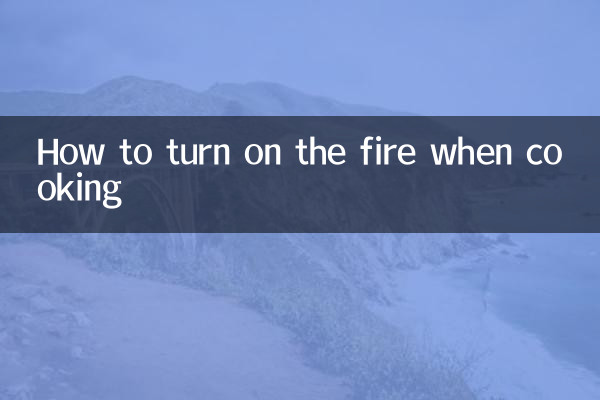How to start cooking: a practical guide from beginner to master
In the kitchen, starting the cooking process is the first step and a key step in determining the success or failure of a dish. Whether you are a novice or an experienced cook, mastering the correct firing techniques can make cooking more efficient with less effort. This article will combine the hot topics and hot content on the Internet in the past 10 days to provide you with a detailed analysis of the correct way to start cooking.
1. Preparations before firing

Before officially firing, the following preparations need to be made:
| steps | content | Things to note |
|---|---|---|
| 1 | Check gas or induction cooktop | Make sure the equipment is in good condition with no air leaks or circuit faults |
| 2 | Prepare ingredients | Food is washed and cut |
| 3 | Prepare seasoning | Condiments are arranged in an orderly manner for easy access |
| 4 | Prepare kitchen utensils | Clean pots, spatulas, etc. |
2. How to open different types of stoves
Depending on the type of stove, the method of starting the fire is also different:
| Stove type | Fire steps | Features |
|---|---|---|
| gas stove | 1. Press the knob and turn it counterclockwise 2. Hold for 3 seconds after hearing the ignition sound 3. Adjust the flame size | Firepower can be precisely controlled, but safety must be paid attention to |
| induction cooker | 1. Turn on the power 2. Select the appropriate power level 3. Start after placing the pot | Heating evenly, but special pots are required |
| electric ceramic stove | 1. Turn on the power 2. Select temperature level 3. Preheat for 3-5 minutes | Slow heating speed, but suitable for a wide range of pots |
3. Firepower control for different cooking methods
Depending on the cooking method, different firepower is required:
| cooking method | Recommended firepower | Applicable dishes |
|---|---|---|
| stir-fry | fire | Stir-fried vegetables, stir-fried meat slices |
| stew | medium to small fire | Stewed soup, braised pork |
| fry | medium heat | Fried eggs, fried fish |
| stewing | small fire | Braised rice, braised food |
4. Safety precautions during firing
When cooking over an open fire, safety always comes first:
| Safety matters | Specific content | Emergency treatment |
|---|---|---|
| gas leak | If you smell any odor, close the main valve immediately | Open windows for ventilation and do not use electrical appliances |
| Oil pan on fire | Never douse it with water | Cover the pot with a lid and turn off the heat |
| Burn treatment | Rinse immediately with cold water | Medical treatment is required in serious cases |
5. Advanced firing skills
After mastering the basics of firing, you can try the following advanced techniques:
1.Warm-up tips: Different pots require different preheating times. Cast iron pots take longer to preheat, while non-stick pots require shorter preheating times.
2.Waste heat utilization: After turning off the heat, the remaining heat of the pot can be used to complete the final cooking, which not only saves energy but also prevents the food from being overcooked.
3.Firepower adjustment: Adjust the firepower in time according to changes in ingredients. For example, when frying meat, first use high heat to lock in the moisture, and then use medium to low heat to cook it.
4.Multi-stove coordination: When using multiple burners at the same time, reasonably arrange the firepower and cooking order to improve efficiency.
6. Frequently Asked Questions
In response to the fire issues that netizens have been most concerned about in the past 10 days, we have compiled the following answers:
| question | Answer |
|---|---|
| Why won’t the gas stove light up? | It may be that the battery is dead, the ignition needle is dirty, or the gas valve is not open. |
| What should I do if the induction cooker heats unevenly? | Make sure the bottom of the pot is flat and use the right size pot |
| How to judge whether the oil temperature is appropriate? | When wooden chopsticks are inserted into the oil, small bubbles will appear around 160°C, and large bubbles will appear around 180°C. |
| Why do stir-fries always stick to the pan? | The pot is not fully preheated or the oil temperature is not enough. This may also be a pot problem. |
7. Summary
Fire seems simple, but actually involves many skills. From choosing the right stove, to mastering the firepower requirements of different cooking methods, to dealing with various emergencies, every aspect needs to be taken seriously. I hope that the systematic introduction in this article will help you become more comfortable in the kitchen and make delicious dishes.
Remember:Safety always comes first, while enjoying the fun of cooking, be sure to pay attention to fire safety. Happy cooking!

check the details

check the details